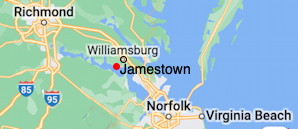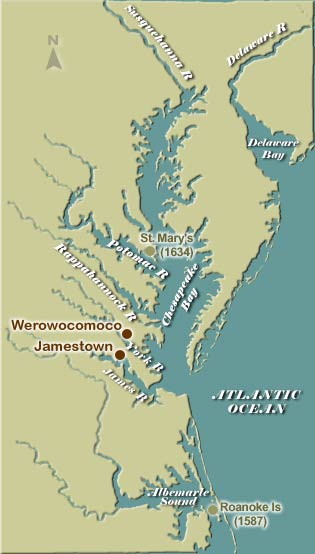 History
HistoryDon's Home
 History
History | Contact |

Jamestown Settlement and the "Starving Time" | UShistory.org
The first joint-stock company to launch a lasting venture to the New World was the VIRGINIA COMPANY OF LONDON. The investors had one goal in mind: gold. They hoped to repeat the success of Spaniards who found gold in South America
Jamestown | u-s-history.com
England was relatively slow to begin settlements in North America, which stood small in the shadow of the vast Spanish Empire. Several halting attempts were made during the 1500s, most notably those of Sir Humphrey Gilbert and Sir Walter Raleigh. No settlements resulted from those early ventures and widespread interest in colonization did not begin to build until after the defeat of the Spanish Armada in 1588. The humiliation of Spanish power on the Atlantic brought a new confidence to English investors and adventurers.
In 1606, King James I divided Virginia* between two groups of competing English merchants. Their charters proclaimed their intentions to spread Christianity, but in truth the primary motivation was the lure of gold and silver.
Jamestown's early history alternated between near disaster and faint success. The root difficulty was that the colony needed soldiers, craftsmen and farmers, but instead was populated largely by self-important gentlemen unaccustomed to manual labor. Energy was wasted in the search for gold and silver, when prudence demanded crop planting.
Native leader Powhatan, the father of Pocahontas, held sway over a loose confederation of tribes from his village of Werowocomoco, north of Jamestown on the York River. The relationship between the natives and the settlers alternated between peace and war, but a potentially fatal blow was delivered by the Indians in a surprise attack in 1622.

Jamestown Settlement | Wikipedia
Links:
Historic Jamestown